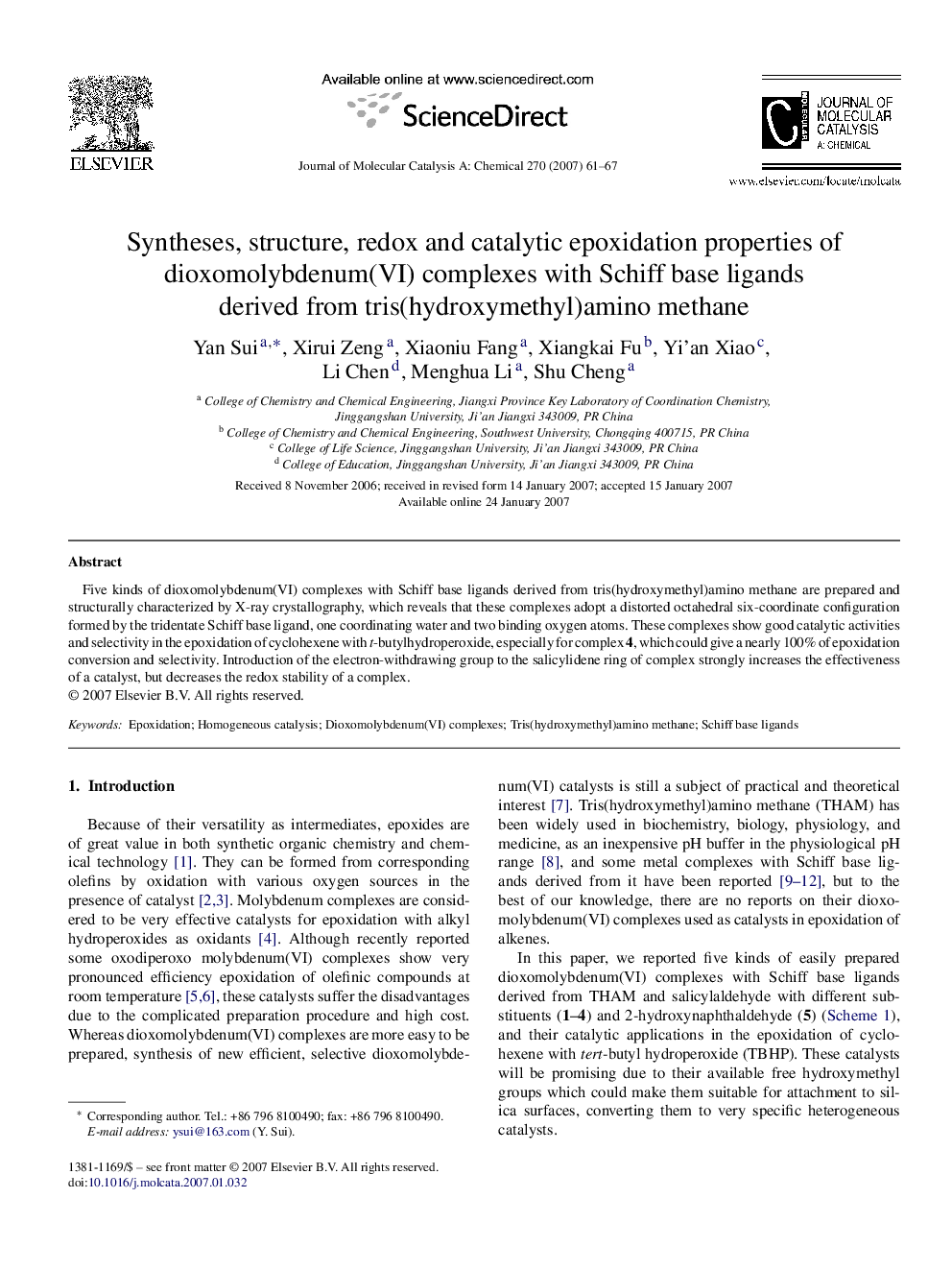| Article ID | Journal | Published Year | Pages | File Type |
|---|---|---|---|---|
| 68019 | Journal of Molecular Catalysis A: Chemical | 2007 | 7 Pages |
Five kinds of dioxomolybdenum(VI) complexes with Schiff base ligands derived from tris(hydroxymethyl)amino methane are prepared and structurally characterized by X-ray crystallography, which reveals that these complexes adopt a distorted octahedral six-coordinate configuration formed by the tridentate Schiff base ligand, one coordinating water and two binding oxygen atoms. These complexes show good catalytic activities and selectivity in the epoxidation of cyclohexene with t-butylhydroperoxide, especially for complex 4, which could give a nearly 100% of epoxidation conversion and selectivity. Introduction of the electron-withdrawing group to the salicylidene ring of complex strongly increases the effectiveness of a catalyst, but decreases the redox stability of a complex.
Graphical abstractFive kinds of dioxomolybdenum(VI) complexes with Schiff base ligands derived from tris(hydroxymethyl)amino methane are prepared and structurally characterized. These complexes are found to be effective catalysts in the epoxidation of cyclohexene with t-butylhydroperoxide, especially for 4, which could give a nearly 100% of conversion and selectivity. The substituents in the salicylidene ring strongly influence the redox stability and catalytic effectiveness. Figure optionsDownload full-size imageDownload as PowerPoint slide
